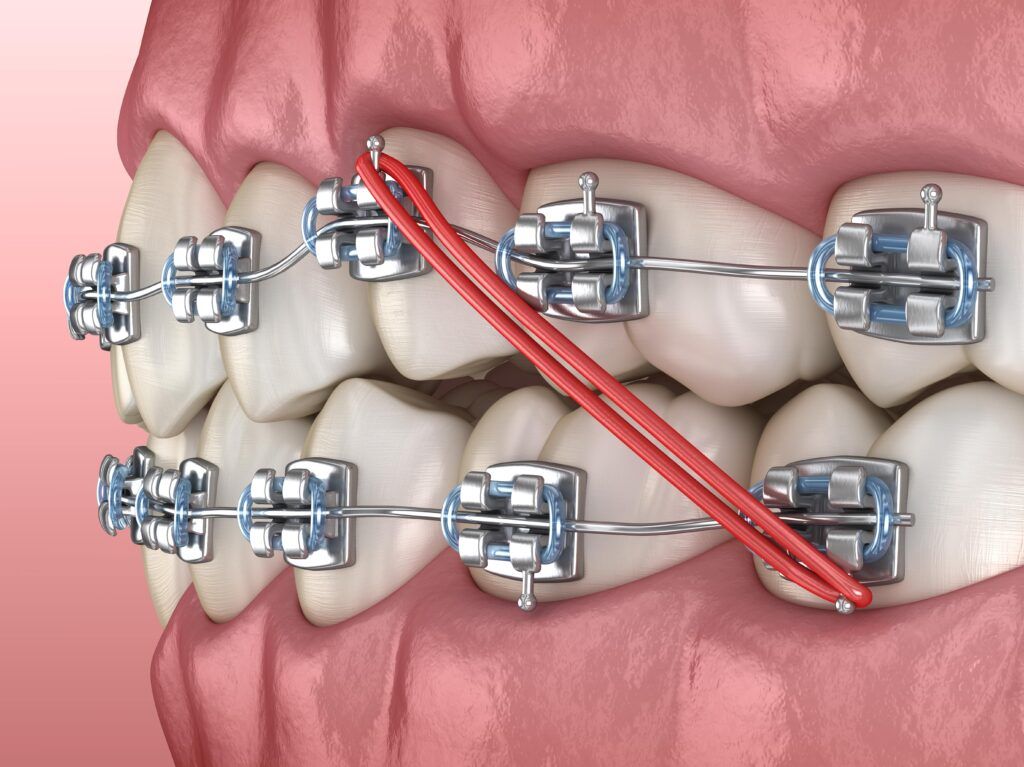Comprehensive Overview to Orthodontics Procedures for Remedying Dental Misalignments
In the world of orthodontics, the journey to achieving a flawlessly lined up smile involves a myriad of procedures customized to remedy dental imbalances. From typical braces to unseen aligners and also surgical choices, the field of orthodontics offers a series of options to deal with differing degrees of oral irregularities. Comprehending the ins and outs of each treatment, including their systems, advantages, and potential disadvantages, is vital in making educated choices about one's orthodontic therapy. As we browse through the extensive overview to orthodontic treatments for fixing oral misalignments, the complex information of each method will unfold, clarifying the path toward a useful and harmonious dental placement.
Orthodontic Procedures Summary

Along with traditional dental braces and clear aligners, orthodontists may likewise advise various other interventions like headgear, palatal expanders, or retainers to deal with particular alignment issues (cumming orthodontist). These treatments are customized per person's one-of-a-kind requirements and may entail a combination of treatments to accomplish the desired outcomes. Routine modifications and surveillance are important components of orthodontic therapy to guarantee development gets on track and to make any required adjustments in the process. By going through orthodontic treatments, individuals can not only attain a straighter smile but additionally improve their general oral health and wellness and feature.
Conventional Dental Braces: Exactly How They Work
When thinking about orthodontic treatments for dental imbalances, typical dental braces attract attention as a reliable approach for fixing teeth placing. Conventional braces contain braces, wires, and bands that collaborate to use continuous pressure on the teeth, progressively relocating them into the wanted alignment. The braces are affixed to the teeth using an unique adhesive, and the cords are threaded with the braces. By adjusting the stress of the cables, orthodontists can manage the instructions and pressure used to each tooth, leading them into correct placement with time.
As pressure is used to the teeth with the dental braces, the bone bordering the teeth is reshaped to support the brand-new tooth settings. Patients will need routine adjustments at the orthodontist's workplace to ensure the braces proceed to apply the appropriate pressure for effective teeth activity.
Unnoticeable Aligners: Disadvantages and pros
These clear, tailor-made trays are essentially unseen when worn, making them an enticing choice for people looking for a much more cosmetically pleasing orthodontic therapy. Clients can get rid of the aligners prior to try this website eating or cleaning their teeth, minimizing the risk of food getting stuck in the device and streamlining the cleaning process.

Surgical Orthodontic Options
Surgical interventions in orthodontics present feasible options for resolving intricate oral misalignments that might not be successfully settled via standard orthodontic therapies. While invisible aligners and conventional braces can correct lots of orthodontic concerns, certain cases require medical treatment to attain optimum results. Surgical orthodontic alternatives are commonly suggested for extreme malocclusions, considerable jaw inconsistencies, and instances where the underlying bone structure needs adjustment to attain correct positioning.
One typical medical orthodontic procedure is orthognathic surgical procedure, which involves rearranging the jaws to correct functional concerns such as problem chewing or speaking. This surgical procedure is typically done in collaboration with an orthodontist who helps align the teeth prior to and after the treatment. Surgical orthodontics may also involve procedures to subject influenced teeth, get rid of excess gum cells, or improve the jawbone to produce an extra unified face account.
Prior to thinking about medical orthodontic alternatives, clients undertake a description detailed evaluation to establish the necessity and potential benefits of such interventions. cumming orthodontics. While surgical procedure may appear overwhelming, it can dramatically boost both the function and aesthetics of the smile in instances where conventional orthodontic treatments fail
Retainers and Post-Treatment Care

Post-treatment treatment entails adhering to the orthodontist's directions vigilantly. This may include proper dental health techniques, participating in follow-up visits, and putting check my reference on the retainers as suggested. Failure to abide by post-treatment care guidelines can lead to relapse, where the teeth slowly move back in the direction of their original settings. Consistent retainer wear, great dental hygiene, and regular dental exams are essential for preserving the outcomes accomplished via orthodontic surgical procedure and guaranteeing the long-lasting security of the dealt with dental alignment.
Conclusion
Finally, orthodontic procedures offer numerous choices for correcting oral imbalances. Standard braces utilize metal braces and cords to move teeth into appropriate placement. Unnoticeable aligners offer an even more very discreet option but may not be ideal for all cases. Surgical orthodontic alternatives are offered for a lot more serious misalignments. Retainers are generally utilized post-treatment to keep the new placement. On the whole, orthodontic treatments can successfully improve dental health and visual look.
As we navigate through the extensive guide to orthodontic treatments for correcting oral imbalances, the elaborate details of each approach will unfold, dropping light on the path toward a harmonious and useful dental alignment. - cumming braces
One of the most typical orthodontic therapies is the use of braces, which are composed of metal brackets and cables that apply gentle stress to gradually shift teeth right into the preferred placement.When considering orthodontic therapies for oral misalignments, typical braces stand out as a reliable approach for correcting teeth positioning. In addition, unseen aligners may not be suitable for complicated orthodontic problems that need more substantial teeth activity, as they are usually advised for moderate to modest instances. Retainers are tailor-made orthodontic devices made to hold teeth in their remedied positions after the completion of orthodontic therapy.